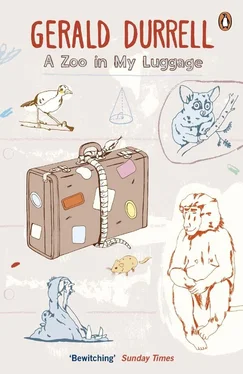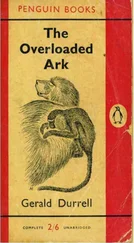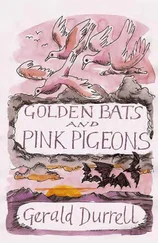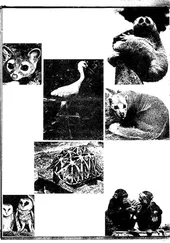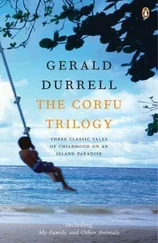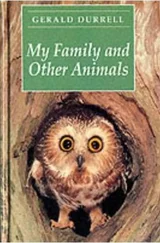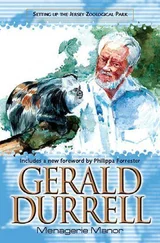Gerald Durrell - A Zoo in My Luggage
Здесь есть возможность читать онлайн «Gerald Durrell - A Zoo in My Luggage» весь текст электронной книги совершенно бесплатно (целиком полную версию без сокращений). В некоторых случаях можно слушать аудио, скачать через торрент в формате fb2 и присутствует краткое содержание. Жанр: Природа и животные, на английском языке. Описание произведения, (предисловие) а так же отзывы посетителей доступны на портале библиотеки ЛибКат.
- Название:A Zoo in My Luggage
- Автор:
- Жанр:
- Год:неизвестен
- ISBN:нет данных
- Рейтинг книги:4 / 5. Голосов: 1
-
Избранное:Добавить в избранное
- Отзывы:
-
Ваша оценка:
- 80
- 1
- 2
- 3
- 4
- 5
A Zoo in My Luggage: краткое содержание, описание и аннотация
Предлагаем к чтению аннотацию, описание, краткое содержание или предисловие (зависит от того, что написал сам автор книги «A Zoo in My Luggage»). Если вы не нашли необходимую информацию о книге — напишите в комментариях, мы постараемся отыскать её.
A Zoo in My Luggage — читать онлайн бесплатно полную книгу (весь текст) целиком
Ниже представлен текст книги, разбитый по страницам. Система сохранения места последней прочитанной страницы, позволяет с удобством читать онлайн бесплатно книгу «A Zoo in My Luggage», без необходимости каждый раз заново искать на чём Вы остановились. Поставьте закладку, и сможете в любой момент перейти на страницу, на которой закончили чтение.
Интервал:
Закладка:
Our four patas lived in a large cage together, and when they were not carefully grooming each other’s fur with expressions of intense concentration on their sad, black faces, they were indulging in weird sorts of Oriental dances. Patas are the only monkeys I know that really do dance. Most monkeys will, during an exuberant game, twirl round and round or jump up and down, but patas have worked out special dance sequences for themselves and, moreover, have quite an extensive repertoire. They would start by bouncing up and down on all fours like a rubber ball, all four feet leaving the ground simultaneously, getting faster and faster and higher and higher, until they were leaping almost two feet into the air. Then they would stop and start a new series of ‘steps’. Keeping their back legs and hindquarters quite still they would swing the front of their body from side to side like a pendulum, twisting their heads from left to right as they did so. When they had done this twenty or thirty times they would launch into a new variation, which consisted of standing up stiff and straight on their hind legs, arms stretched above their heads, faces peering up at the roof of their cage, and then staggering round and round in circles until they were so dizzy that they fell backwards. This whole dance would be accompanied by a little song, the lyric of which went like this: ‘Waaaaow … waaaaow … proup … proup … waaaaow … proup,’ which was considerably more attractive and comprehensible than the average popular song sung by the average popular crooner.
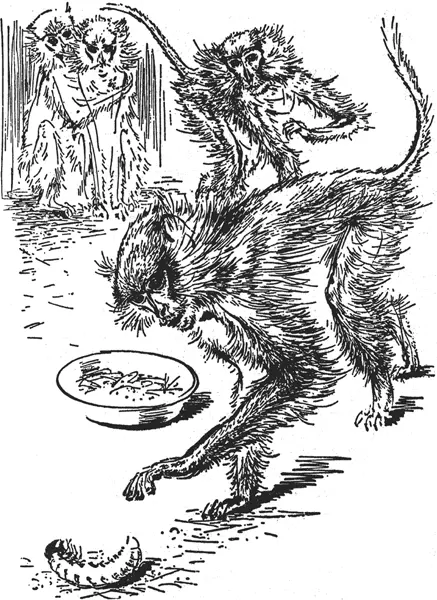
The patas, of course, adored live food of any description and they felt their day was incomplete if they did not have a handful of grasshoppers apiece, or some birds’ eggs, or a brace of juicy, hairy spiders. But for them the caviare of life was the larva of the palm beetle. Palm beetles are an oval insect about two inches in length, which are very common in the Cameroons. They lay their eggs in rotting tree trunks, but show a marked preference for the soft, fibrous interior of the palm trees. Here, in a moist, soft bed of food, the egg hatches out and the grub soon grows into a livid white, maggot-like creature about three inches long and as thick as your thumb. These fat, twitching grubs were considered by the patas to be the Food of the Gods, and the shrieks of delight that would greet my appearance with a tinful of them would be almost deafening. The curious thing was that, although they adored eating the larvae, they were really scared of them. After I had emptied the grubs on the floor of the cage, the patas would squat round the pile, still screaming with pleasure, and keep touching the delicacies with trembling, tentative fingers. If the grubs moved, they would hastily withdraw their hands and wipe them hurriedly on their fur. At last one of them would grab a fat larva and, screwing up his face and closing his eyes tightly, he would stuff the end into his mouth and bite hard. The larva, of course, would respond to this unkind decapitation with a frantic dying wriggle and the patas would drop it hastily, wipe his hands again and, still sitting with tightly closed eyes and screwed-up face, would munch on the morsel he had bitten off. They reminded me of débutantes being introduced to their first fresh oysters.
Unwittingly one day – under the impression that I was doing them a kindness – I caused pandemonium in the patas cage. An army of local children kept us supplied with live food for the animals and they would arrive just after dawn with calabashes full of snails, birds’ eggs, beetle larvae, grasshoppers, spiders, tiny hairless rats and other strange food that our animals enjoyed. On this particular morning one lad brought in, as well as his normal offering of snails and palm beetle larvae, the larvae of two Goliath beetles. Goliath beetles are the biggest beetles in the world – an adult measures six inches in length and four inches across the back – so it goes without saying that the larvae were monsters. They were also about six inches long, and as thick as my wrist. They were the same horrid unhealthy white as the palm beetle larvae, but they were much fatter, and their skin was wrinkled and folded and tucked like an eiderdown. They had flat, nut-brown heads the size of a shilling, with great curved jaws that could give you quite a pinch if you handled them incautiously. I was very pleased with these monstrous, bloated maggots, for I felt that, since the patas liked palm beetle larvae so much, their delight would know no bounds when they set eyes on these gigantic titbits. So I put the Goliath larvae in the usual tin with the other grubs and went to give them to the patas as a light snack before they had their breakfast.
As soon as they saw the familiar tin on the horizon the patas started to dance up and down excitedly, crying, ‘proup … proup’. As I was opening the door they sat down in a circle, their little black faces wearing a worried expression, their hands held out beseechingly. I pushed the tin through the door and tipped it up so that the two Goliath larvae fell on to the floor of the cage with a soggy thud, where they lay unmoving. To say that the patas were surprised is an understatement; they uttered faint squeaks of astonishment and shuffled backwards on their bottoms, surveying these barrage-balloons of larvae with a horrified mistrust. They watched them narrowly for a minute or so, but as there was no sign of movement from the larvae, they gradually became braver, and shuffled closer to examine this curious phenomenon more minutely. Then, having studied the grubs from every possible angle, one of the monkeys, greatly daring, put out a hand and prodded a grub with a tentative forefinger. The grub, who had been lying on his back in a sort of trance, woke up at once, gave a convulsive wriggle and rolled over majestically on to his tummy. The effect of this movement on the patas was tremendous. Uttering wild screams of fear they fled in a body to the farthest corner of the cage, where they indulged in a disgracefully cowardly scrimmage, vaguely reminiscent of the Eton wall-game, each one doing his best to get into the extreme corner of the cage, behind all his companions. Then the grub, after pondering for a few seconds, started to drag his bloated body laboriously across the floor towards them. At this the patas showed such symptoms of collective hysteria that I was forced to intervene and remove the grubs. I put them in Ticky the black-footed mongoose’s cage, and she, who was not afraid of anything, disposed of them in four snaps and two gulps. But the poor patas were in a twittering state of nerves for the rest of the day and ever after that, when they saw me coming with the beetle larvae tin, they would retreat hurriedly to the back of the cage until they were sure that the tin contained nothing more harmful or horrifying than palm beetle larvae.
One of our favourite characters in the monkey collection was a half-grown female baboon called Georgina. She was a creature of tremendous personality and with a wicked sense of humour. She had been hand-reared by an African who had kept her as a sort of pet-cum-watchdog, and we had purchased her for the magnificent sum of ten shillings. Georgina was, of course, perfectly tame and wore a belt round her waist, to which was attached a long rope; and every day she was taken out and tied to one of the trees in the compound below the Rest House. For the first couple of days we tied her up fairly near the gate leading into the compound, through which came a steady stream of hunters, old ladies selling eggs and hordes of children with insects and snails for sale. We thought that this constant procession of humanity would keep Georgina occupied and amused. It certainly did, but not in the way we intended. She very soon discovered that she could go to the end of her rope and crouch down out of sight behind the hibiscus hedge, just near the gate. Then, when some poor unsuspecting African came into the compound, she would leap out of her ambush, embrace him round the legs while at the same time uttering such a blood-curdling scream as to make even the staunchest nerves falter and break.
Читать дальшеИнтервал:
Закладка:
Похожие книги на «A Zoo in My Luggage»
Представляем Вашему вниманию похожие книги на «A Zoo in My Luggage» списком для выбора. Мы отобрали схожую по названию и смыслу литературу в надежде предоставить читателям больше вариантов отыскать новые, интересные, ещё непрочитанные произведения.
Обсуждение, отзывы о книге «A Zoo in My Luggage» и просто собственные мнения читателей. Оставьте ваши комментарии, напишите, что Вы думаете о произведении, его смысле или главных героях. Укажите что конкретно понравилось, а что нет, и почему Вы так считаете.
